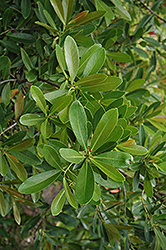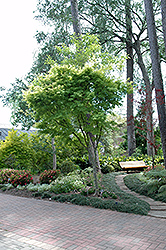It's all about ...
plants

Height: 20 feet
Spread: 15 feet
Sunlight:
![]()
![]()
Hardiness Zone: 8b
Other Names: syn. Polyspora axillaris, Franklinia axillaris
Description:
A standout late fall bloomer; rounded, crinkled white flowers with yellow centers resembling fried eggs appear in late fall; narrow, glossy green foliage is attractive; takes pruning well and can be maintained as a small tree or hedge; interesting bark
Ornamental Features
Fried Egg Tree features showy fragrant white round flowers with yellow eyes at the ends of the branches from mid to late fall. It has attractive dark green evergreen foliage which emerges red in spring. The glossy narrow leaves are highly ornamental and remain dark green throughout the winter. The peeling khaki (brownish-green) bark is extremely showy and adds significant winter interest.
Landscape Attributes
Fried Egg Tree is a dense multi-stemmed evergreen tree with a shapely oval form. Its average texture blends into the landscape, but can be balanced by one or two finer or coarser trees or shrubs for an effective composition.
This tree will require occasional maintenance and upkeep, and should only be pruned after flowering to avoid removing any of the current season's flowers. It has no significant negative characteristics.
Fried Egg Tree is recommended for the following landscape applications;
- Accent
- Hedges/Screening
- General Garden Use
Planting & Growing
Fried Egg Tree will grow to be about 20 feet tall at maturity, with a spread of 15 feet. It has a low canopy with a typical clearance of 1 foot from the ground, and is suitable for planting under power lines. It grows at a slow rate, and under ideal conditions can be expected to live for 60 years or more.
This tree does best in full sun to partial shade. It does best in average to evenly moist conditions, but will not tolerate standing water. It is not particular as to soil pH, but grows best in rich soils. It is somewhat tolerant of urban pollution. This species is not originally from North America. It can be propagated by cuttings.
This plant is not reliably hardy in our region, and certain restrictions may apply; contact the store for more information.

